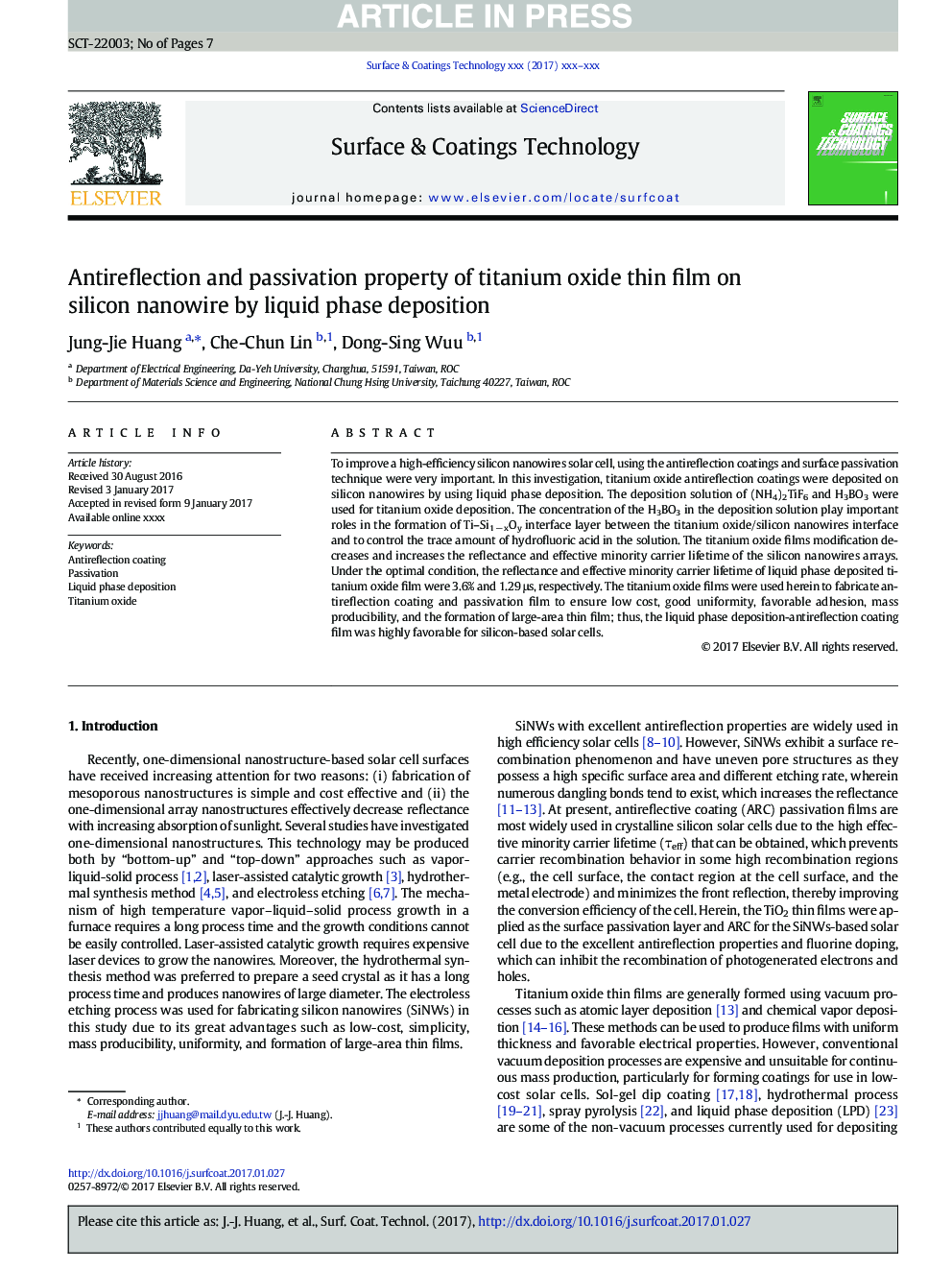| Article ID | Journal | Published Year | Pages | File Type |
|---|---|---|---|---|
| 5464970 | Surface and Coatings Technology | 2017 | 7 Pages |
Abstract
To improve a high-efficiency silicon nanowires solar cell, using the antireflection coatings and surface passivation technique were very important. In this investigation, titanium oxide antireflection coatings were deposited on silicon nanowires by using liquid phase deposition. The deposition solution of (NH4)2TiF6 and H3BO3 were used for titanium oxide deposition. The concentration of the H3BO3 in the deposition solution play important roles in the formation of Ti-Si1 â xOy interface layer between the titanium oxide/silicon nanowires interface and to control the trace amount of hydrofluoric acid in the solution. The titanium oxide films modification decreases and increases the reflectance and effective minority carrier lifetime of the silicon nanowires arrays. Under the optimal condition, the reflectance and effective minority carrier lifetime of liquid phase deposited titanium oxide film were 3.6% and 1.29 μs, respectively. The titanium oxide films were used herein to fabricate antireflection coating and passivation film to ensure low cost, good uniformity, favorable adhesion, mass producibility, and the formation of large-area thin film; thus, the liquid phase deposition-antireflection coating film was highly favorable for silicon-based solar cells.
Related Topics
Physical Sciences and Engineering
Materials Science
Nanotechnology
Authors
Jung-Jie Huang, Che-Chun Lin, Dong-Sing Wuu,
